Why Are Swedes Living Longer than Americans? It's Probably the Bikes.
AT A GRUELING CYCLING RACE IN SWEDEN,
ONE MAN DISCOVERS A SECRET TO LONGEVITY.
I came across this piece this morning. After reading, it left me with a wonderful sense of why I live to ride and ride to live.
John
******
Albert Einstein's life advice in a letter to his son, Eduard: “Life is like riding a bicycle. To keep your balance, you must keep moving.”
******
It is amazing how frail a cyclist can feel on the cusp of a race or any adventure designed to test the spirit.
It was mid-June and I was in Sweden, on the shore of a glittering lake, Vättern, and about to take part in what’s billed as the “world’s largest bike challenge,” the 196-mile Vätternrundan, along with 13,995 other riders, three-quarters of them Swedes. It was a delightfully cool Friday evening, and I should have been taking in the cobblestone streets and 13th-century architecture of Motala, the small city surrounding the starting line. I should have been casting my mind dreamily out onto the course. The race makes one clockwise loop around Vättern, Sweden’s second-biggest lake, rolling through the long Swedish twilight as mist rises up from the water and the roads remain open to intermittent traffic.
But no, I was sullen and filled with dread, for my feet were hurting, along with the inside of my calves, and I was chastising myself for overtraining. Meanwhile, a larger question churned within me. Just a couple weeks after the Vätternrundan, I would be turning 60 and be blustering into old age with the unalloyed hunger of a 25-year-old. I am one of those pathetic AARP members who still endeavors to attack on the hills, and I wondered, “How does one gracefully segue into old age?”
I was in the right place to ask, for the Vätternrundan is an event that prides itself on welcoming all comers. There are, sure, a few lean phenoms who wail through the mostly flat course in just over seven hours. But the race, held annually, offers no prize money or even age-group awards, and the average finish time is about 13 and a half hours. At the starting line, where racers are released in groups of 50 or so at two-minute intervals from Friday night into the wee hours of Saturday morning, many cyclists show up in street clothes and sneakers. Rusty three-speeds are common in the peloton, and lots and lots of very old people take part.
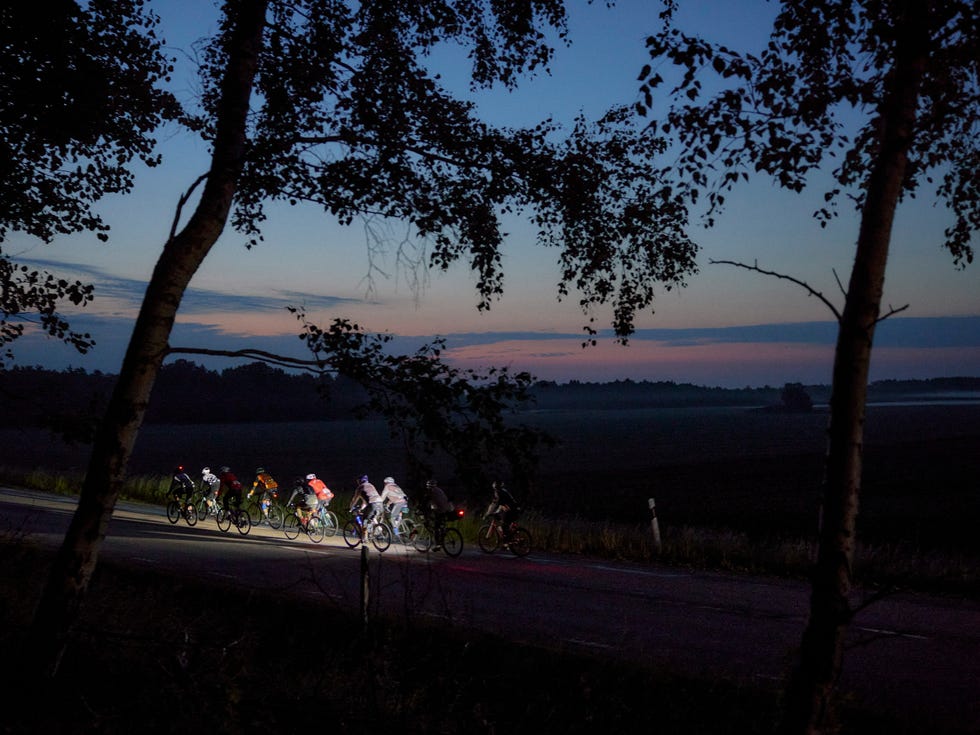
Dawn breaks during the 2024 Vätternrundan.
At this year’s race, 281 people over the age of 70 are starting. There is a guy, now 79, who has completed every Vätternrundan since its 1966 inception. Religiously, Stig Johansson rides in ripped jeans and clogs while piloting a heavy steel singlespeed manufactured in 1937. There are 17 other Swedes (16 men and one woman) participating in the event this year who have already completed 50 Vätternrundans.
In some ways, the longevity on display here is no surprise. Swedes have a long life expectancy—83 years as opposed to our 76—and 68 percent of all Swedes own a bike, as opposed to 37 percent of all Americans. In almost any Swedish village, there are dedicated car-free bike lanes where serene, unhelmeted elders pedal along with canes strapped to their bike racks. Meanwhile, exercise is very much a Swedish value—in so many small towns, the local culture is built around sports clubs where kids play soccer and ice hockey. And the habit of fitness persists into old age. Sixty-one percent of Swedish women over 70 are considered active, per WHO standards, as opposed to 35 percent in the U.S.
Ultraendurance events have a special place in Swedes’ hearts—witness, for example, the Vasaloppet, a 56-mile cross-country ski race that draws 16,000 competitors to the frozen boglands of central Sweden each March. According to Daniel Svensson, associate professor of Sports Sciences at Malmö University, the fervor for such sadistic trials is historically rooted. “Sweden was built on activities like farming and forestry,” Svensson explains. “In our information age, finishing the Vasaloppet or the Vätternrundan is one way of manifesting that you still have a capable body and can work for a long time, even if you’re very old.”
The most intriguing questions are psychological: How do we reconcile with the dimming of our powers? Is it possible to find a happy medium between going for it and just smelling the flowers?
At the moment I’m awaiting a planned meeting with one of the oldest people ever to start the Vätternrundan. Anders Olsson, 89, is a retired engineer and part-time forester who’s finished the race 46 times. When Olsson shows up, he seems loose-limbed, at ease. His long white hair is drawn into a makeshift ponytail, and his mustacheless white beard is trim. He speaks English precisely, his voice a murmur, and even though his start time is but 40 minutes away, he smiles and makes quiet self-deprecating jokes.
I admire his poise, so as we sit down on a bench, I ask a question that I hope might guide my race: “What’s your strategy?”
“Well,” Olsson says, pointing, “I will start up there and we will see if and when I come back. Hopefully I will enjoy the red poppies in the fields after Motala. They are extremely beautiful. And then south of Ödeshög, I expect to listen to the nightingale singing. There is usually a wonderful nightingale concert.”
Eventually, he rises and I watch him push his bike, a 20-year-old Specialized Sirrus, up a grassy hill toward the line. An ace bandage wraps his left knee, but he moves forward with slow determination, like a soldier going to battle.
Cycling is a very good form of exercise for older people. A 2021 study found that cyclists are able to mitigate the “decline in walking performance” that comes with aging. Typically, people over 65 expend 15 to 20 percent more energy walking than their juniors over the same distances. A research team led by evolutionary biologist Daniel Aslan, at the University of Southern California, found that cyclists older than 65 used nearly the same amount of energy as younger adults when walking identical distances. Seniors who walk for exercise did not fare as well in the study.
Meanwhile, a 2022 experiment found that cyclists over 65 had better balance than their non-cycling counterparts—significant, given that Americans spend $50 billion annually addressing fall-related injuries to seniors. The American Heart Association recommends 150 to 300 minutes a week of moderate exercise. More than that may not be the ticket to longevity, though. A 2021 paper published in the European Heart Journal reported that male endurance athletes (those who exercise well over suggested guidelines) older than 40 are disproportionately plagued by plaque buildup in their coronary arteries as well as scarring of their heart muscles, and both afflictions likely increase their chance of having a heart attack. An earlier study, published in 2013, drills down further on senior athletes. A team of Norwegian researchers compared more than 500 men, aged 65 to 90, who took part in their country’s most popular cross-country ski race, the 33-mile Birkebeinerrennet, and found that the skiers were about 30 percent more likely to experience atrial fibrillation (A-fib), a sometimes deadly cardiac arrhythmia, than their agemates in the general population. Older female endurance athletes are less studied, but a 2023 paper in the medical journal BMC Geriatrics says that “rudimentary reports” indicate that they, too, are at increased risk of suffering A-fib.
But most of us already intuited the physiological truths leaping out from the Norwegian study. When we get older, life asks us to slow down—to take naps, to leave the club before the band starts its second set. Meanwhile, a certain impulse inside nearly all of us yearns to burn on, hopeful that time will never lay its grim hand on our shoulder.
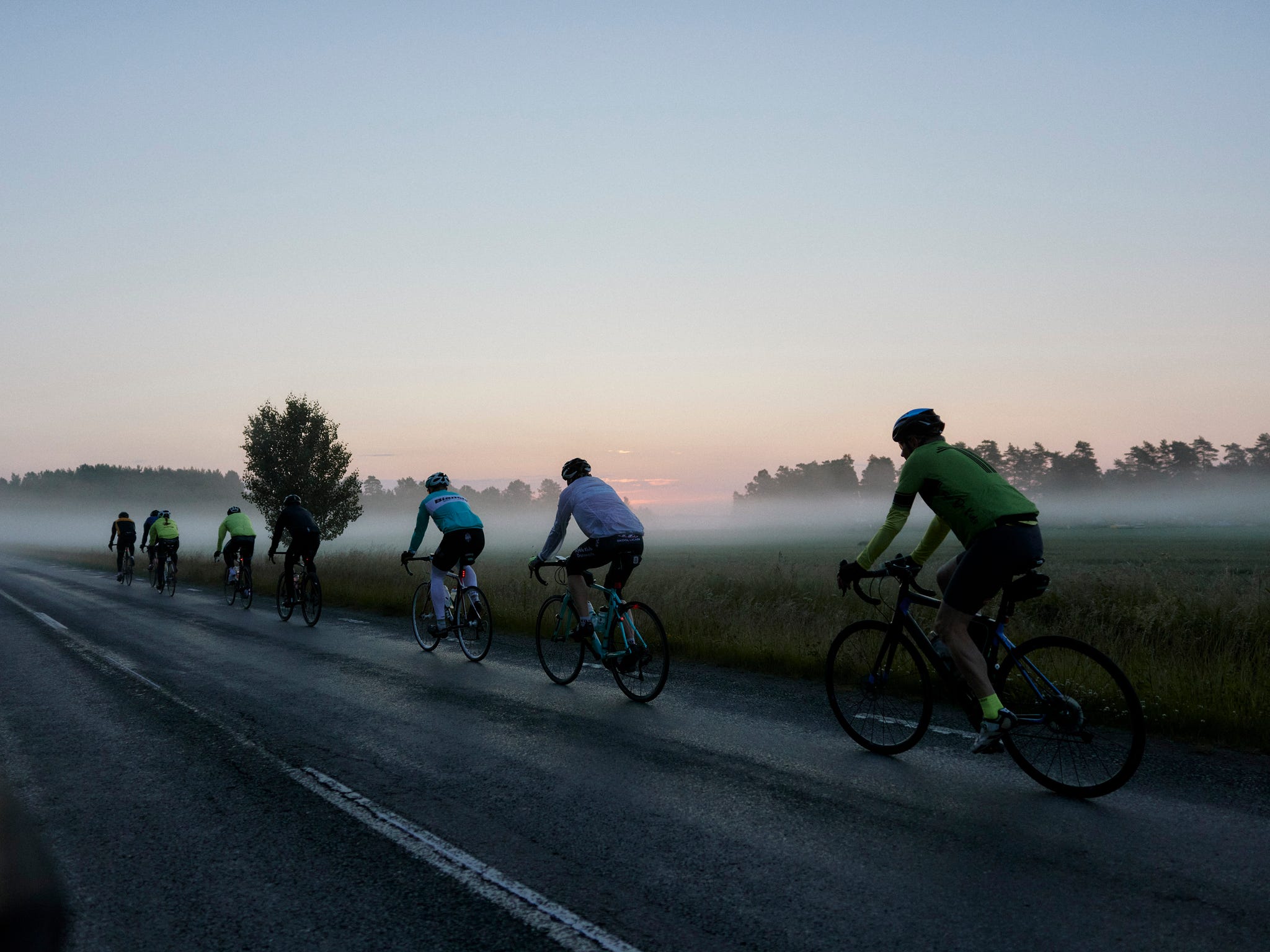
For me, the most intriguing questions are psychological: How do we reconcile with the dimming of our powers? And is it possible to find a happy medium between going for it and just smelling the flowers?
At the Vätternrundan, the stars are not the speedsters but rather those who seem to have cracked the riddle of aging. I witness this myself on Friday evening as the race’s first wave rolls out of Motala amid loud, pumping rock music. At 7:32 p.m., the Swedish-language emcee goes ballistic, for suddenly there’s a celebrity in our midst.
Stig Johansson, he of the clogs and jeans, pays no heed to assigned starting times—he’s earned the right to show up in Motala on his own timetable. And he’s here now, moving toward the starting line, wearing jeans with a gaping hole in the knee. His long white hair flows freely, and when he laughs—this happens every 30 seconds or so—it comes out as a loud, toothy seal bark. His helmet, meanwhile, is topped by a giant, floppy red pompom. Called a čuipi, a pompom hat like this one is traditionally worn by Sweden’s indigenous Sami people, and Stig’s was made by a Sami craftsman. He says he wears it to attain a little visual razzle-dazzle, but the gesture is arguably a little tone-deaf and archaic.
When Stig rounds the corner at the base of the first hill, maybe 100 yards into the race, he grins and waves to the throng of spectators gathered there, and they volley back with a whoop of joy. A few miles later, in the quiet outside of town, he’ll reach into his handlebar basket and switch on the cassette player nestled there. Over the next 24 hours, as he rolls along at a dawdling eight miles an hour, he’ll play a medley of peppy, upbeat Swedish dance music from bands like Sven-Ingvars, founded in 1956 and still flourishing. For Swedes, the music carries the nostalgic, familiar magic that, say, early Elvis does for Americans.
My own Vätternrundan began on Saturday morning, at 5:06. Pre-race, I’d tenuously attached myself to a group of a dozen middle-aged Swedes who hoped, as I did, to finish in under 10 hours. But as we pacelined out of Motala and on through the poppy fields in the early morning coolness, my teammates kept giving me the universal “chill out” hand signal each time I floated to the front for a pull.
I was feeling strong. The pain in my feet had vanished (had it merely been anxiety?), and when a pack of about 40 riders began flying past us, I tuned into the whooshing sound they gave off as they cut through the wind. I recognized the aerodynamic opportunity glowing before me. “Nine hours!” I thought. “Nine, nine, nine!” I abandoned my team and joined the quick horde.
But there were problems. In Sweden—indeed, throughout Europe—cycling clubs can be tight social units. They drink cappuccino together three times a week. Outsiders can’t just weave into their pacelines, and when I tried to do so, I was rebuffed. “This is a closed group,” one guy said. “Ride behind us.”
I did. But back there, it wasn’t easy keeping contact with the group, and whenever a gap opened, requiring a sprint—well, I already told you how old I am.
For me, the Vätternrundan accrued a cruel pattern: I’d hang with a fast group for 20 or so miles. Then I’d find myself dropped and burning matches riding solo as I waited for another fast group to come up from behind and loft me along through the countryside.
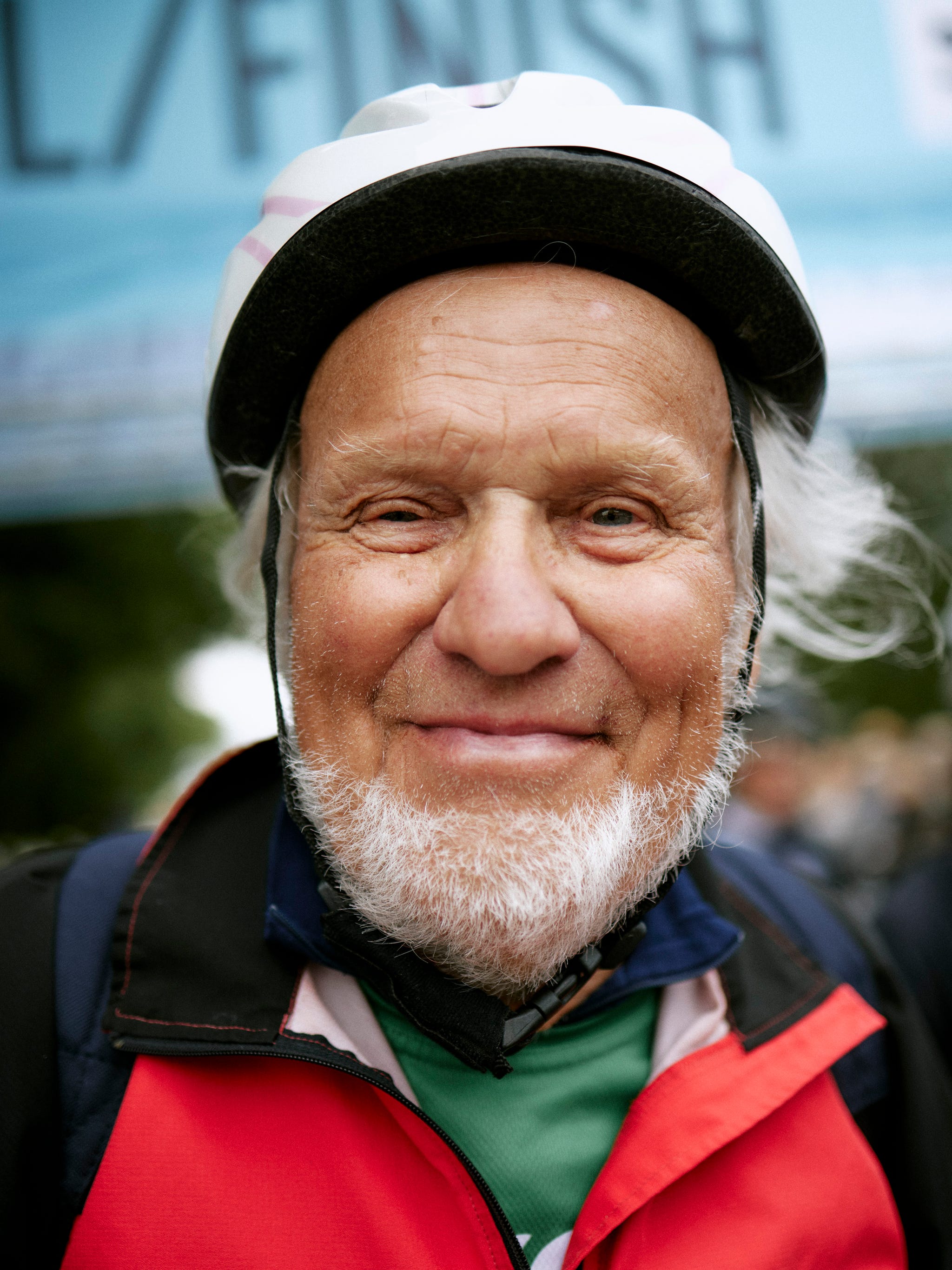
Anders Olsson, 89, after this year’s race.
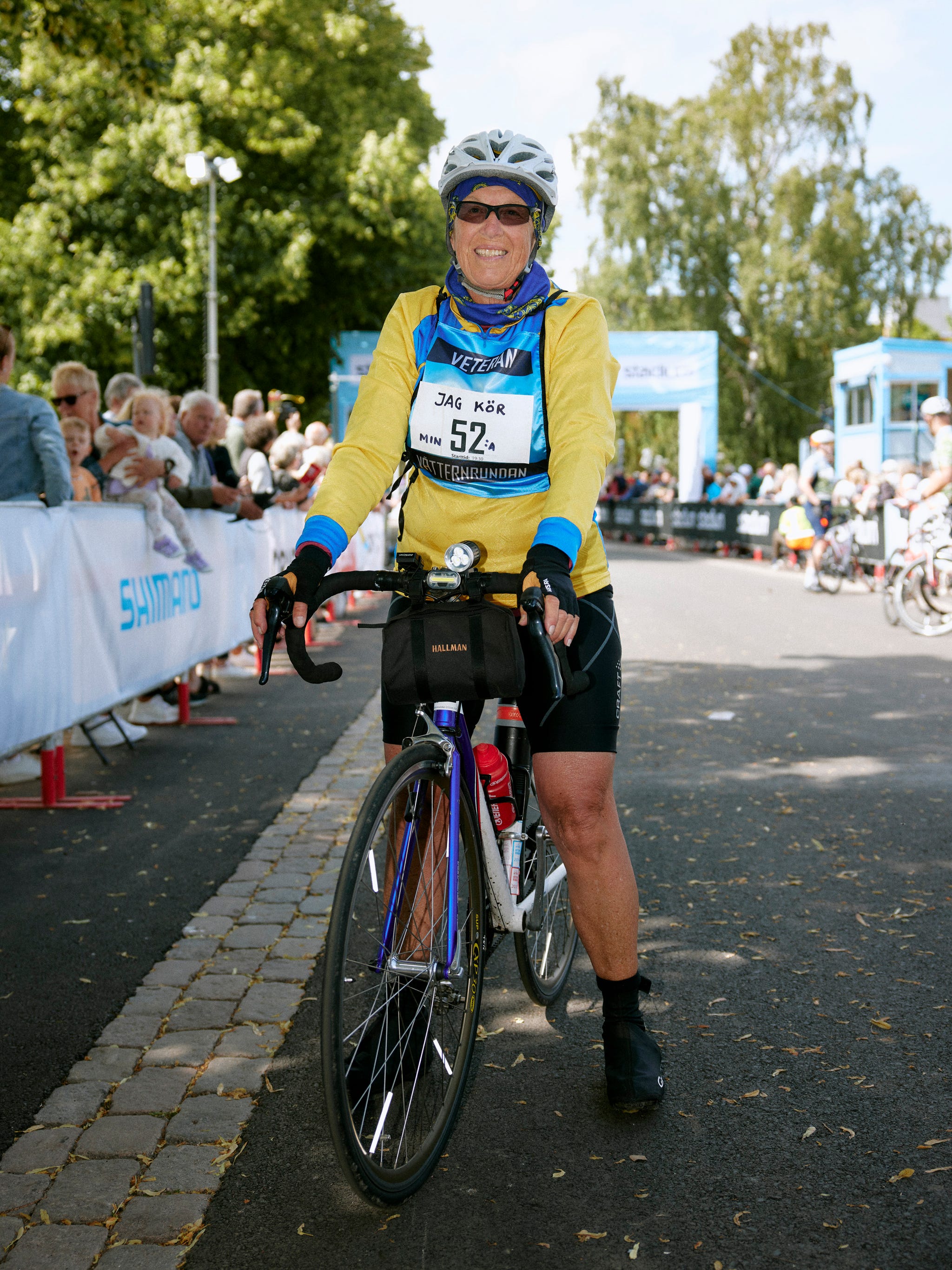
Birgitta Gerglund, 72, the first woman to finish 50 Vätternrundans.
Riding while old is an exercise in managing dwindling powers wisely, and I was not handling this task well. By the time I passed Stig, exactly 120 miles into the race, I was weary, but there were crowds of cheering fans in each little town. At rest stops, volunteers from local sports clubs ladled cool blueberry soup into paper cups and often wore matching T-shirts. The race is a fundraiser for such clubs, and its homey spirit buoyed me along. I finished in 9 hours, 40 minutes, satisfied but also aware, in the wake of my restless ramble, that I had absorbed no wisdom on aging. I would need to spend the next several days rambling along the shores of Lake Vättern on my bike and on buses and in a rental car, searching.
When I first catch sight of him, he’s shirtless and hunched, feeding a piece of firewood into a loud, screeching 1940s-era band saw built before safety catches existed. Protective goggles, work gloves? Nah. Stig Johansson is old-school, and everything in his orbit betrays a staunch recalcitrance.
The crimson sting on his leathery forearms and back? As he sees it, no real man ever wears sunscreen. “Never ever!”
The blood-red color of the simple wooden house where has lived alone (save for one five-year stretch) since 1971?
“It’s falu red. Traditional Swedish.”
And the clutter of junk surrounding his four storage sheds—the rusty buckets, the scraps of wood and concrete?
“You never know when you might need it. And there’s always someone who wants to borrow something.”
When we sit down at an iron table in his yard to talk, I learn that Stig grew up poor, the fourth of nine children. There were so many kids, he says, in a rare moment of vulnerability, that “I didn’t get a lot of time by myself with my parents.”
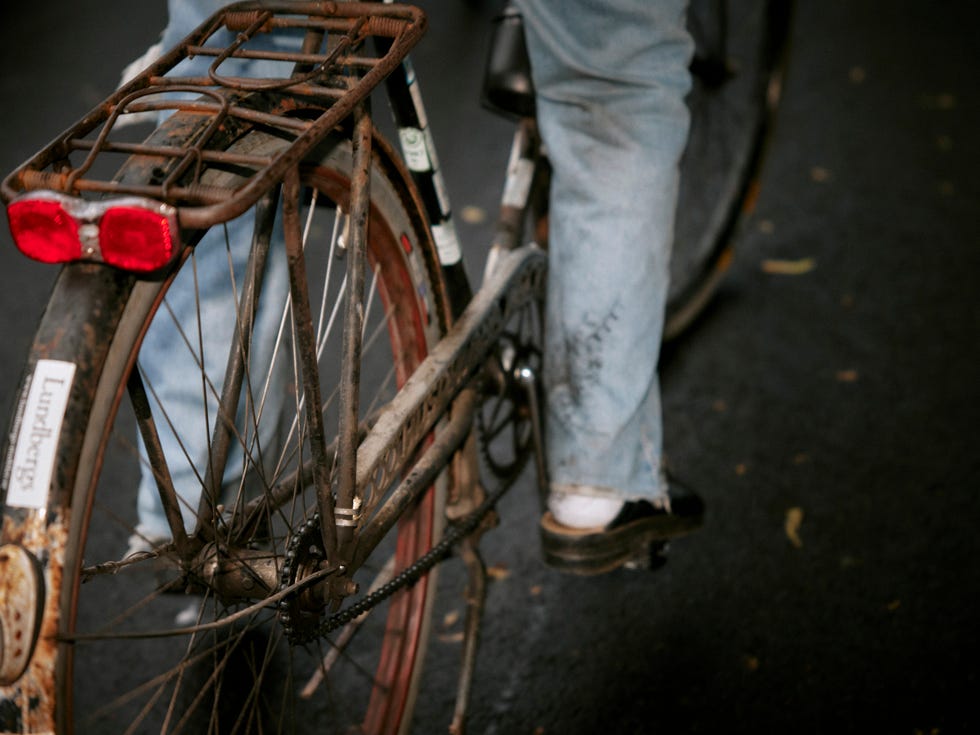
Johansson rides the Vätternrundan in jeans and clogs.
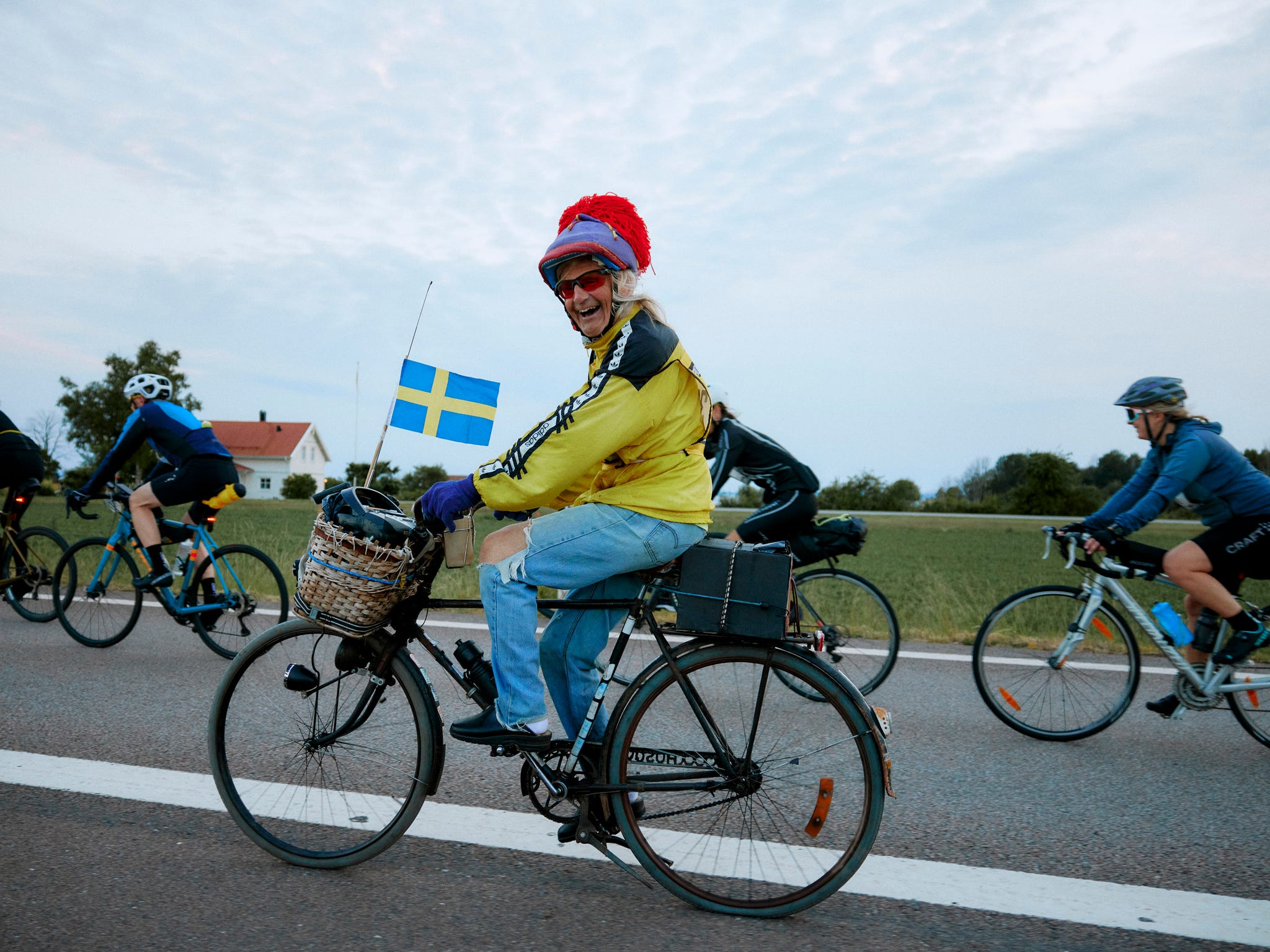
Stig Johansson on his Husqvarna singlespeed during the 2024 Vätternrundan.
Stig’s father, Karl, was a furniture maker, but the year Stig was born, his shop—and all the furniture in it—burned to ashes. Karl started work as a carpenter, but when his son was 9, Karl fell about 60 feet off a ladder, incurring a disabling injury that likely figured in his early death, which came when Stig was 15. At 16, Stig left school to work at a grocery store for eight cents an hour. At 17, he transferred to a furniture factory, and today, 62 years later, he is still a janitor there, one day a week.
Stig had a relationship once, with a woman 12 years his junior, but she had never found peace residing in his house. “Maybe I’m hard to live with,” he explains, ruminating on a breakup that occurred nearly 40 years ago. “I offered to buy her house in town. I offered to renovate and make this house larger, but she was really attached to her parents.” When the younger of the couple’s two children was 14 days old, she moved out, and Stig says he did not have much involvement in his kids’ upbringing.
His life is very social, though. For the past 40 years, Stig has coached teenage handball players and also served as the volunteer snow groomer at the local cross-country ski area. He may be part hermit, but interactions with others feed his soul, and this is evident even in his Vätternrundan strategy.
Deep in one of Stig’s sheds, there’s a Swedish-brand road bike, a ’70s-era Crescent, with drop bars. Inflate the tires, oil the chain, and it’d be a pretty quick ride. But Stig prefers his upright Husqvarna, from the Swedish chainsaw company. “Riding that, you can talk to people,” he explains. “They can see you.” When he underscores this observation with his seal laugh, I think back on the moment I saw him, 120 miles in. All 20 or so riders in my group recognized him at once, and hailed him. He waved back brightly, even though he had, by then, been communing with fans for some 15 hours.
Stig has pushed past hard stuff—poverty, his dad’s death, emotional distance from his kids—and found light. Muscle and grit are his survival tools, and I can certainly relate. At times I suffer, well, not clinical depression, but melancholia, and the best treatment I know involves going for a long ride. It’s a tactic that works miracles when you’re 50 or 60. But when you’re 80?
Stig’s got a Plan B, actually. “People tell me, ‘When you can’t ride anymore, you can go with me on the back of a tandem,’” he says.
Oh, to be a Swedish celebrity! As I leave Stig’s house, I’m quite sure that no one was ever going to offer me a ride on a tandem. So next I seek out a more kindred spirit.
Nils-Gunnar Stedt is a fighter. In 2023, racing the Vätternrundan at age 77, in sweltering 82-degree heat, he began to feel off-balance 130 miles in. “I thought there was something wrong with my inner ear,” he says. Accustomed to pacelining with his longtime teammates at 18 miles per hour, he was now alone and weaving all over the road at 12 mph. Still, when a motorist offered him a ride, he declined and said he was weaving because his bike had a mechanical tic.
When he stopped for water at 160 miles, he fell to the ground. A single thought pulsed through his mind: “I gotta get up.” He did, and he moved forward, he says, on “autopilot.” After he finished, he never went to the doctor—he didn’t want anyone to tell him to stop riding.
When I visit Nils, we start chatting in his office, where 50 Vätternrundan medals hang on the wall, along with a 2018 photo of a wizened Nils hunched over a time-trial bike, wearing a pointy helmet, racing in a 70-plus championship in Norway.
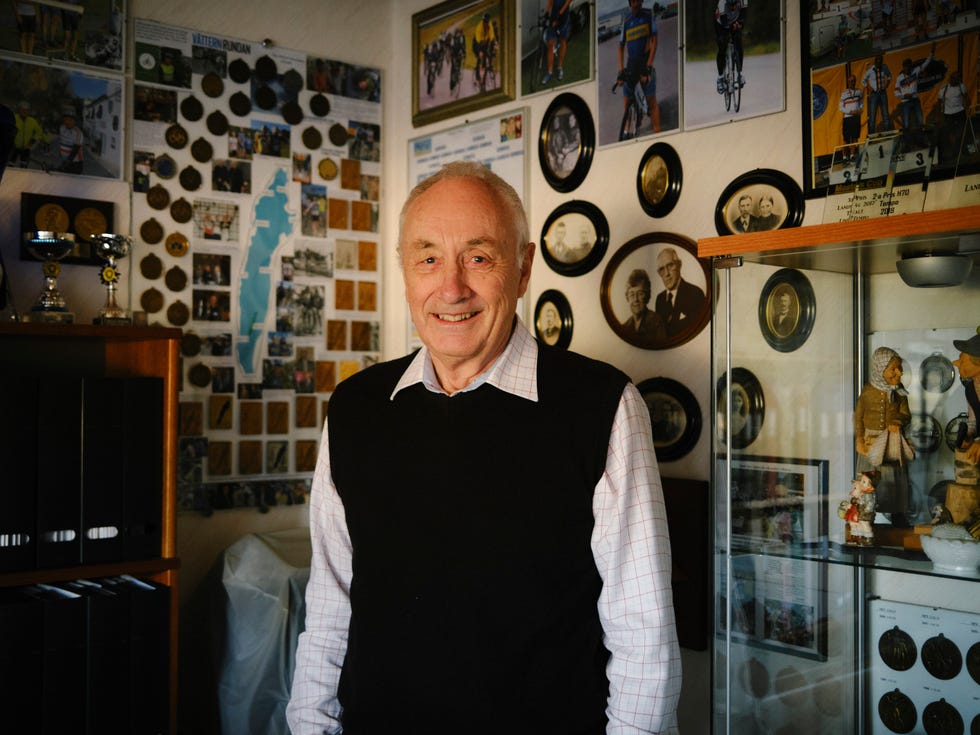
Nils-Gunnar Stedt at home in Linghem, Sweden, with his decades of Vätterundan medals and memorabilia.
It is in this shrine to achievement that Nils has written four self-published books on the Vätternrundan, the latest a biography of (I’m quoting the title) “Living Legend” Lars-Åke Åkerman, a man so tough that, in 1998, he rode the Vätternrundan soon after he’d crashed his bike into a lump of concrete, shattering his left leg. Åkerman pedaled with one leg that year and finished in 21 hours.
In recent years, though, the legend has softened. In 2019, after completing 55 Vätternrundans, Åkerman’s knee problems stopped his long ride. And this morning, one of Nils’s longtime bike friends has just called to suggest that Nils, too, hang up his cleats. “At a certain point,” the friend reasoned, “you need to consider your family.”
Nils is dismissive of that advice. “I’m resilient,” he tells me. “I have a resting pulse of 34.” He’s also developed a new Vätternrundan strategy. After careful consultation with his wife, he decided, in late 2023, that henceforth he would soft-pedal the Vätternrundan and make many stops. Amid cool temperatures at the 2024 Vätternrundan, the strategy worked. Nils finished in 14 hours, feeling fresh.
I ask him what if he just curbed his Vätternrundan expectations and ended his race in Hjo, a charming resort town 106 miles in?
For a second my question leaves him dumbstruck. “That won’t happen,” he says finally, in cool tones. “That would be meaningless.”
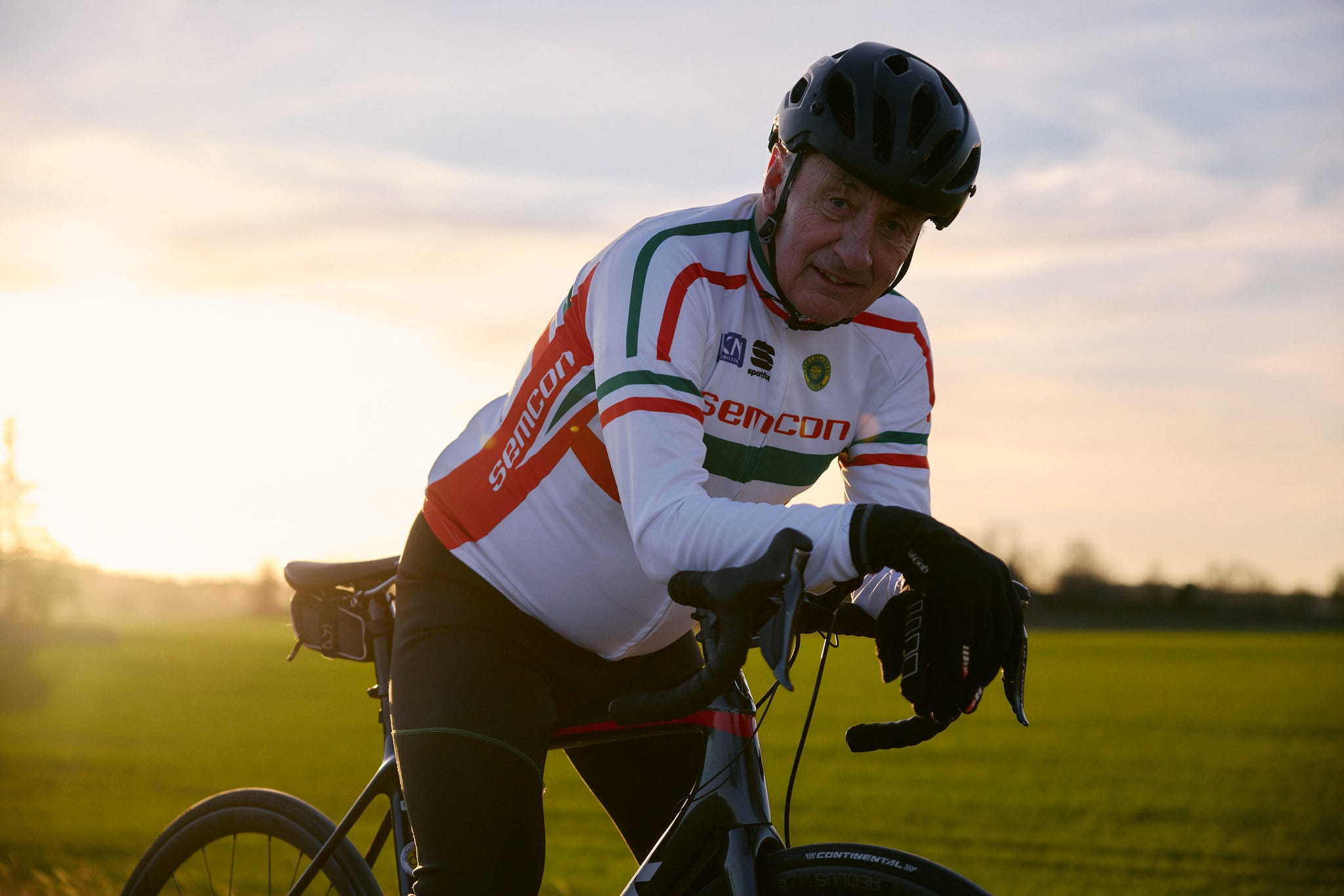
Stedt has medals from 50 editions of the Vätternrundan.
Nils’s stoicism has a deep context. In Swedish, there’s a word that dates to the Viking era and, some believe, sums up the Swedish psyche. Lagom ostensibly means “just enough,” as in not too hot, not too cold. But in the emotional realm, it describes a cool restraint and a quiet self-assurance so prevalent in Sweden that last year one Swedish town, Luleå, financed a formal “Säg hej!” campaign to get its residents to say hi to one another.
Stoicism is useful to any endurance athlete gutting their way to the finish line. But as a worldview, it’s kind of stark, and my chat with Nils left me with an existential question: Is life simply a matter of tilting into the wind until the lights go out?
At this point, you’ve probably surmised that I brought my own stoic machismo to the Vätternrundan. Indeed, when I found myself toiling, for 15 miles or so, behind some guy whose seatpost bore a sticker reading “Boys Don’t Cry,” the phrase tumbled about in my skull like a credo; it was gasoline for my engine. And now I yearned to find a rider who answered life’s hard challenges with nuanced humility. So it was an honor to meet the only woman ever to have completed 50 Vätternrundans.
A retired special education teacher who lives in Motala, a stone’s throw from the Vätternrundan starting line, Birgitta Berglund is 72. Like Nils, she has a serious racing pedigree. She finished 12th in the 1970 Swedish national road-racing championships, and in 2017, at the age of 65, she pacelined the Vätternrundan in a solid 11 hours and 31 minutes.
Still, as we linger on the patio of her pleasant ranch home sipping coffee, Birgitta focuses not on her achievements but on the special delights of the Vätternrundan. She reminisces how, in 1972, she tucked into a lightning-fast pack of a hundred riders and they so dominated the road that the police sirened onto the scene and broke up the peloton. And she recalls the beauty of the 2021 race, which was held in September, thanks to COVID-19, and played out mostly in darkness. “You couldn’t tell where you were on the lake,” she says. “You couldn’t see beyond the road lit up by your headlight. But everything was so calm.”
Birgitta has ridden the Vätternrundan in three different gears—as a fast pacelining racer; as a slowpoke, in the company of her good friend, Stig Johansson, the clog man; and (most relevant here) as a moderately slow elder. “During the pandemic,” she says, “I decided I wasn’t supposed to go fast any longer. It’s dangerous—you can crash.”
Myself, I’d be inclined to regard the slowish races as dim flickers after a raging fire. But Birgitta speaks of her transition away from the peloton with neither dismay nor regret. “It wasn’t hard to make the decision to slow down,” she tells me. “Now I get to start early. I get to ride through the night.”
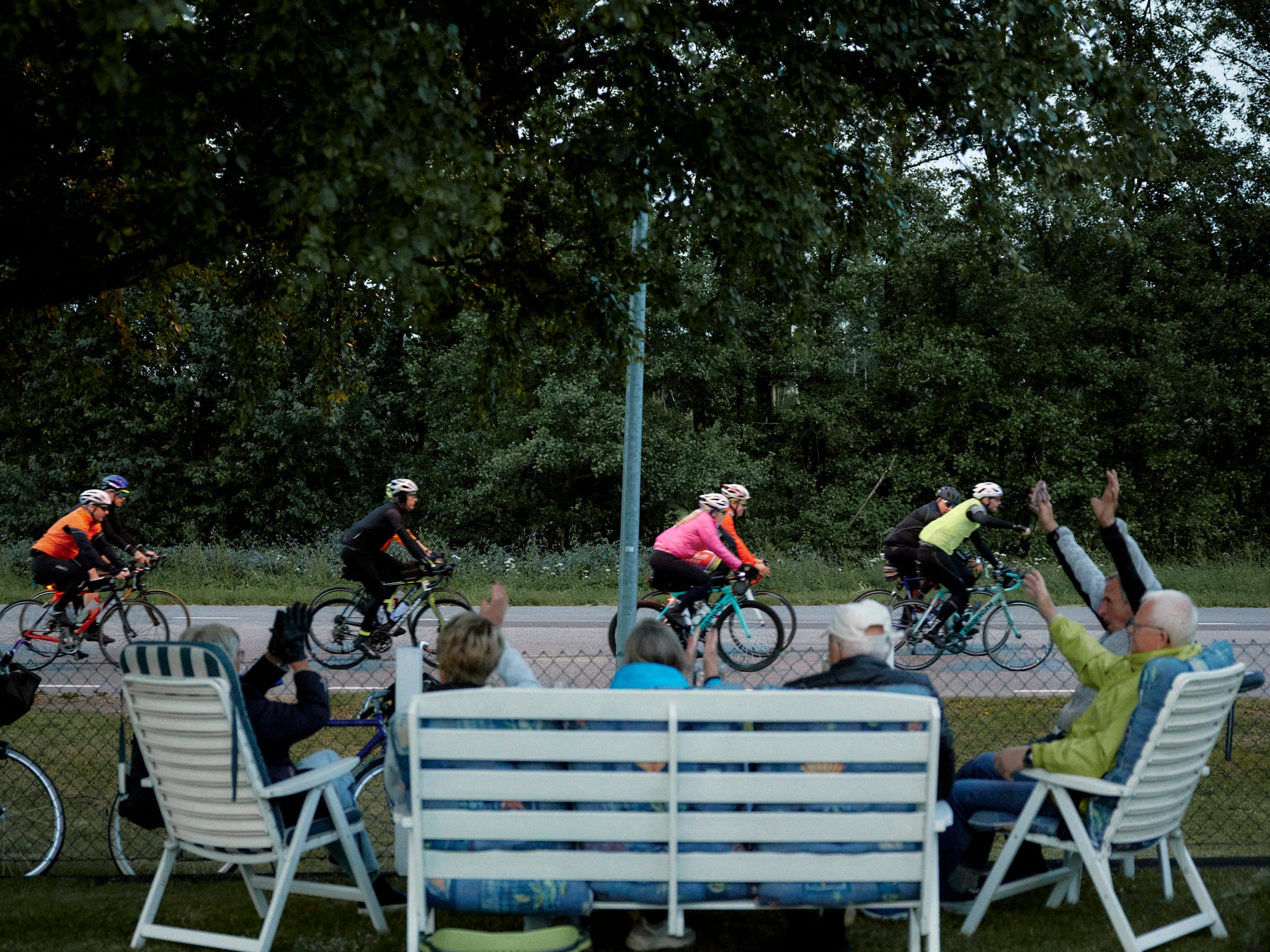
Spectators in the town of Ödeshög cheer riders as they pass.
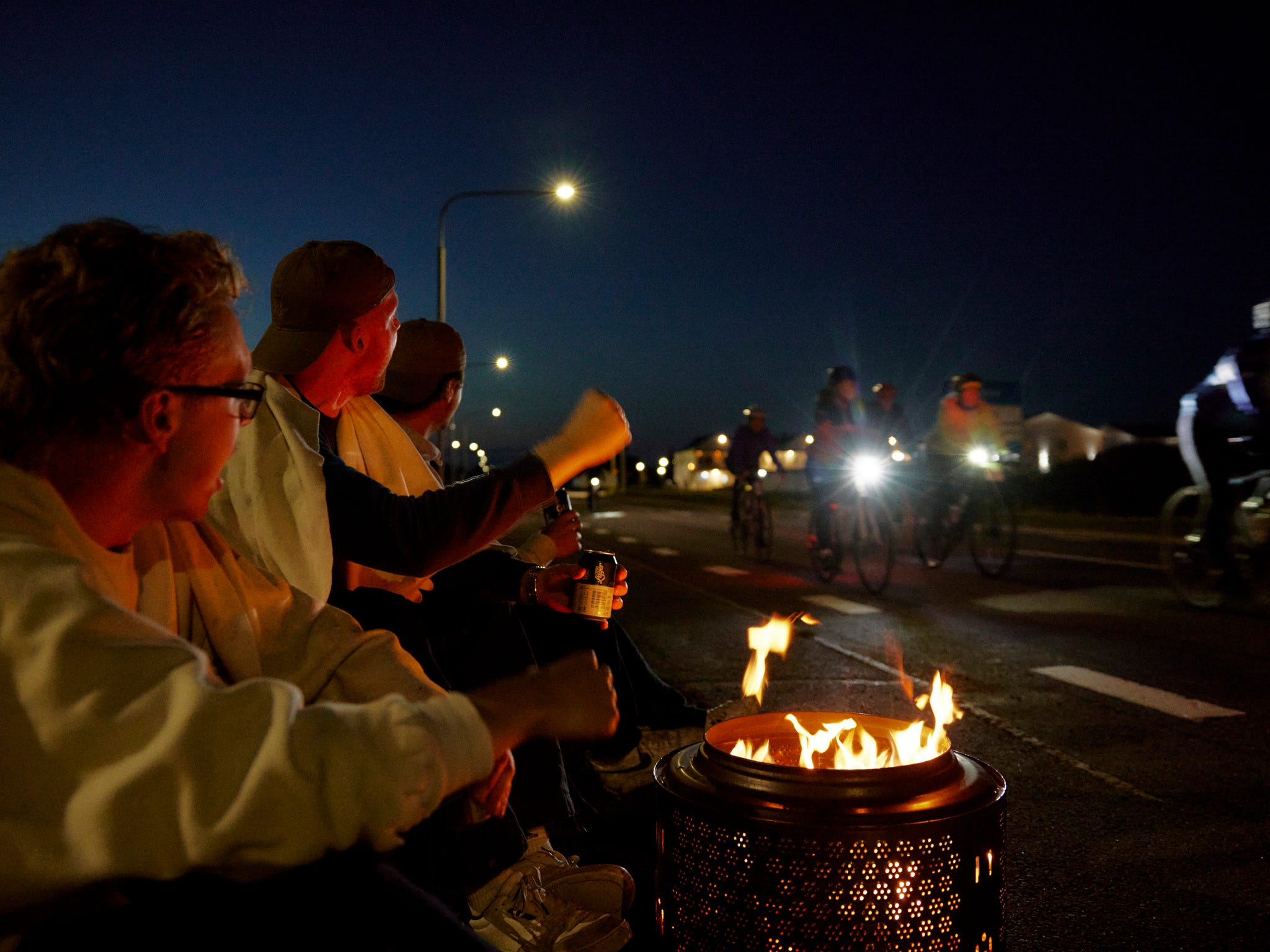
Fans in one of the small towns that dot the course.
Her equanimity is rooted in the steadiness of her life—and in family connections. She’s ridden the Vätternrundan with both of her daughters, and she’s already done a mountain bike race with her grandson, age 10. Her partner of 45 years isn’t really a cyclist, but he built a special gate for their fence using her old bicycle. But there’s also another force at work, Birgitta says, and it involves the Swedish adjective segare, which translates as “enduring” and hints at toughness and a slow persistence. “Women are more segare than men,” she says. “They live longer, and when you walk around town here, you see that it’s the old women that are taking care of the men, not vice versa.”
I’m suddenly aware of how trapped I am in my own male egotism, and of how stubborn and brittle I could become in old age. I wonder: Is there a way for old guys to transcend such a fate? And then I think of how at peace I felt sitting on that bench with 89-year-old Anders Olsson, and I make one last appointment.
On a sunny morning, I ride 15 miles or so to meet Anders. We put my bike on his rack and drive to the 125-acre forest that he maintains with his wife of 64 years. On the way, he tells me of his 20-hour Vätternrundan journey. At around 130 miles, he says, “I stopped and turned around to look at some yellow flowers. Near Hjo, I stopped for 10 minutes to appreciate the sunrise.”
In 1980, Anders completed the Vätternrundan, then 297 kilometers long, in 9:42, but he says, “The only memory I have of that run is the back tire of the man in front of me. To chase minutes is a disaster. I am like Ferdinand,” he says, referencing the titular character from the classic children’s book by Munro Leaf about a bull who would prefer to smell flowers rather than fight. “I am only interested in sitting by a tree and looking at the flowers.”
That’s far from the whole story. In his professional life, Anders oversaw production for SKF, a ball-bearing manufacturer. His mind is labyrinthine and logical, and his approach to life is methodical. As we spend two hours tramping his steep forest, he turns the visit into a fine-grained tutorial on forest management; we dwell at length on a complex chart detailing when and how to thin the woods. “It takes 90 years to grow a tree,” he says. “You have to be patient.”
A certain impulse inside nearly all of us yearns to burn on, hopeful that time will never lay its grim hand on our shoulder.
When we sit down in a tiny cabin for lunch, he eats his four gourmet mini-sandwiches one by one, moving from right to left.
It’s arguable that Anders is quintessentially Swedish. In writing about his country in 1984, the eminent Swedish sociologist Hans L. Zetterberg noted: “In Sweden, rationalism has long dominated the climate of opinion... Political debate in Sweden deals primarily with technical questions.”
For Anders, I think, rationalism is the firm soil that roots his life, allowing him to flourish and stay vibrant—to have fun, even. He tells me that two of his granddaughters recently appointed themselves his fashion advisors and put his hair in a ponytail. “They did it,” he says, “after telling me, ‘You look awful.’ And now sometimes I pull the rubberband close to my head, so I look like [the comic book character] Tintin.”
Cycling, Anders says, is one thing he doesn’t plan. When he goes for a ride, he says, “I just make up the route as I go along. And I stop whenever I want.”
Eventually, we pick our way downhill to his car. Then we stop at a remote forest intersection. Most people would have offered me a lift back to my hotel. But Anders doesn’t bother. We both understand the delight that can come with starting a ride in an unfamiliar place.
As I start pedaling, I watch the wind bend the long grass by the roadside. Somewhere in the back of my mind, a small, riotous voice is going, “Next year, nine hours! The right group, the right training…”
But for now, I just listen to the whoosh of my wheels as I roll along through the Swedish countryside.
B
Bill Donahue is a writer living in New Hampshire.



No comments:
Post a Comment